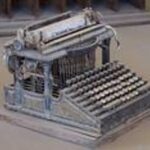Application of the seven elements of art, color, value, lines, shape, form, texture and space can be seen in clothing. Designers use the elements of art as they create articles of clothing, working with different colors, lines and textures in their designs. The average person may not see the applications of the elements of art on clothing, but to someone with an artistic eye the elements are evident.
Art and Clothes Designing
In designing clothes, the art elements of color, lines, and texture can play a major role in the design process. A combination of these elements fused together form the design of a piece of clothing. The clothes designer’s job is to try to find the right balance of these elements as they produce clothes designs that not only wear well, but look well too. In essence, a clothes designer is actually a clothes artist as they weave the elements of art into their designs.
Color
Through using various combinations of colors, clothes designers produce various effects with their clothes designs. Color is comprised of three properties, hue, value and intensity; hue is a color’s name, value is a color’s lightness or darkness and intensity is a color’s brightness or darkness. Clothes designers use the different properties of color to produce specific visual effects through their apparel. An example of this is a designer using the property of intensity, a clothes designer may choose to use a bright shade of a color to produce a garment that conveys a positive outlook or elevated emotions, alternatively, a dull color or shade of a color may be used to set more of a dark somber tone. Additionally, specific colors have the propensity to produce certain emotions. An example of this is the color orange, the color of flesh or of a fire in a fireplace, which alludes to informality or approachability. A clothes designer could use orange in a garment to convey friendliness, warmth and approachability.
Lines
The art element of lines forms the shape or outline of an article of clothing and are a component of the fabrics design. The lines on clothing can be either straight lines or curves and can influence the way the clothing is perceived. For example, garments with curved lines give a piece of clothing a softer appearance than clothes with straight lines. The straight lines on clothing can either be vertical, horizontal or run diagonally. The straight lines on clothing can possibly affect the way the clothing and perhaps the way the wearer is perceived. From an artistic standpoint, vertical lines convey dignity, strength and are more formal, horizontal lines convey an attitude of rest or relaxation, while diagonal lines can allude to excitement and action.
Texture
While the art elements of color and lines have to do with the appearance of clothing, the art element of texture not only deals with appearance but also deals with how an article of clothing feels to the touch or how an article of clothing looks like it would feel. The tactile properties of texture that appeals to the sense of touch can produce memories and emotions in those viewing a piece of apparel and in those viewing the garment as well.
- Ccsdart.files.wordpress: Elements of Art and Principles of Design
- Getty.edu: The Elements of Art (Education at Getty)
- Char.Txa.Cornell.edu: Color, Value and Hue
- Studiocodex: Art Elements: Texture


